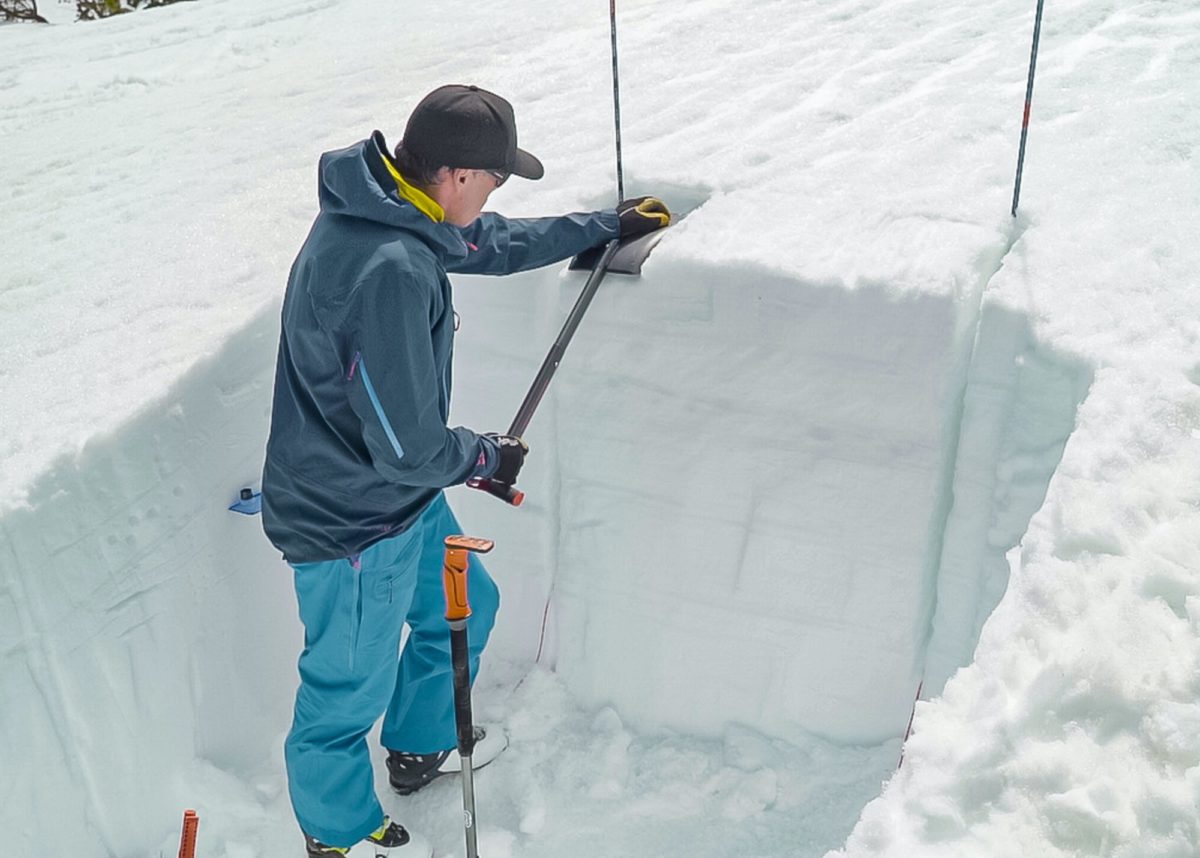A procedure used to assess and characterize instabilities in the snowpack, often in a snow pit.
Snowpack tests (sometimes referred to as stability or instability tests) are used to assess and characterize instabilities in the snowpack. Unfortunately, there is no perfect “silver bullet” test for predicting avalanches. There is always inherent error due to spatial variability (meaning that test results can vary across a specific slope) and projecting the physical processes of a small test feature onto a large slope (what scientists would call a “scale mismatch”). Because of this, only use snowpack tests to conclude a slope is unstable, and do not use them alone to conclude a slope is stable. However, if you have an understanding of the state of the snowpack drawn from avalanche forecasts, and combine this with other observations, snowpack tests can be an excellent tool for identifying and understanding instabilities. Snowpack tests should be conducted on safe, undisturbed, and representative slopes, and can often be collected more safely on slopes gentler than 30 degrees. Most tests can easily be set up with a shovel, snow saw, avalanche probe(s), and a thin piece of cord for cutting. The list of tests below is not comprehensive, but it explains the setup and interpretation of the most common tests.
